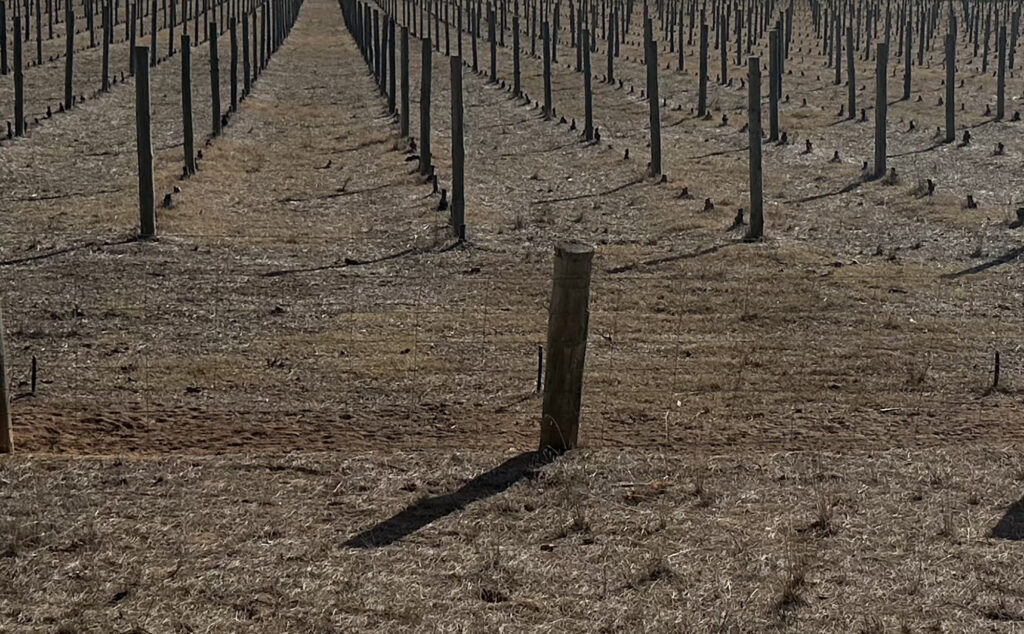When undertaking vine removal in South Australia, there are several key factors to consider from a biosecurity perspective to ensure grapevines are correctly removed and that this is communicated with Vinehealth Australia.
Vines listed in the Register that Vinehealth Australia manages, are those where the vine root system is in the ground – whether the vine is alive, dead, producing or non-producing. To qualify for removal from the Register, the vine root system must therefore be removed from the soil. Vines cut off at the trunk or to the ground level, poisoned or grazed, do not constitute removal from the soil according to the Phylloxera and Grape Industry Act 1995, and therefore will not be removed from the Register.
Why do vine roots need to be removed?
Pests can survive on vine roots that are left in the soil during the vineyard removal process. Examples include mealybugs which can transmit grapevine viruses, and phylloxera.
When undertaking vine removal, it is important to choose a method that removes as much of the vine root material from the soil as possible, to minimise carryover of these pests on remnant root material that can reinfect the next vines planted in the same soil.
Vine disposal
Carefully consider what is to be done to the vines once removed. Stockpiling removed vines for an extended period of time can serve as an inoculum source for the spread of fungal diseases such as Eutypa.
Machinery movement
To undertake vine removal, particularly in established vineyards where vine root systems are substantial, earthmoving machinery will be required. This machinery is particularly high risk in terms of introducing pests, diseases and weeds onto your property given its contact with the soil.
Practice clean in, clean out: know where machines have come from and the risks posed. Check cleanliness and required documentation prior to granting machines access to your vineyard. When inspecting, carefully check for areas on the machinery where soil and plant material might accumulate, such as caterpillar tracks, excavator tines and digging equipment. Verify if the equipment has been used in interstate vineyards in the last 29 days. If used in an interstate Phylloxera Infested Zone or Phylloxera Risk Zone, we advise this machinery is not used on a vineyard in South Australia.
Adhere to entry requirements for grapevine material and equipment in the SA Plant Quarantine Standard
For grapevine material
A reminder than according to Condition 7, Clause 1 – grapevines as either whole vines or even chipped vines are prohibited entry into South Australia from interstate, irrespective of the interstate Phylloxera Management Zone these vines originated from.
For equipment
A reminder that according to Condition 7, Clause 3 for equipment previously used in the production and manipulation of grapes, grapevines and/or used on vineyard soil – used trellis posts, vine guards, dripper tube and wire is prohibited entry into South Australia from interstate, irrespective of the interstate Phylloxera Management Zone these items of equipment originated from.
Advise Vinehealth Australia of vine removal
If you have removed all or a portion of your vines, you are required under the Phylloxera and Grape Industry Act 1995 to advise Vinehealth Australia within three months of doing so.
If you no longer own 0.5 hectares or more of vines and you have no outstanding debt, you are eligible to be removed from the Register and cease receiving communications from Vinehealth Australia. Please contact the Vinehealth Australia office on 08 8273 0550 between 8.30am and 4.30pm Monday to Thursday, or email admin@vinehealth.com.au for further information on the Grower Exit process.
If you have questions or comments about vine removal, please contact Warren Birchmore at warren@vinehealth.com.au.
